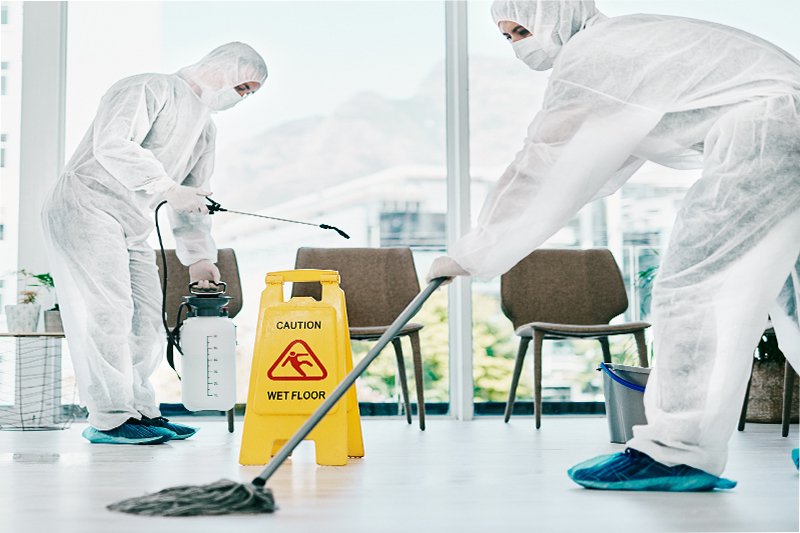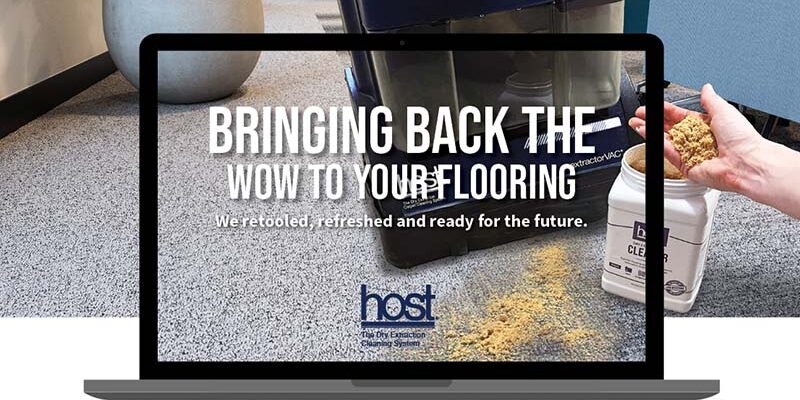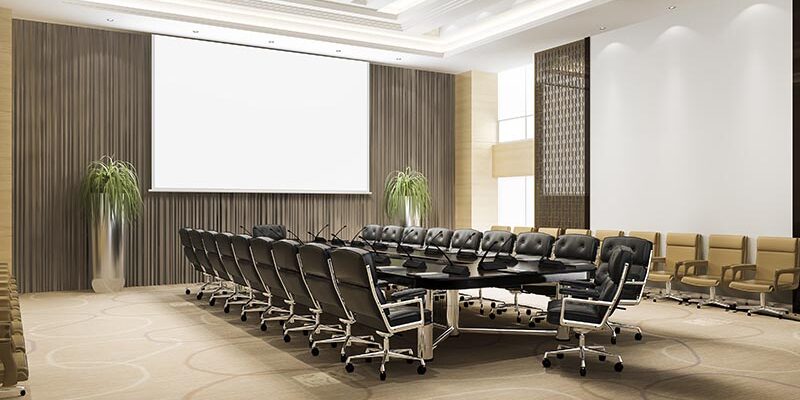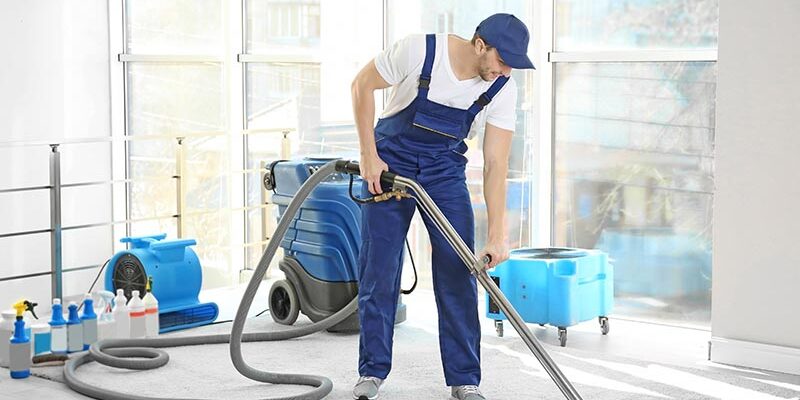Avoid Unhealthy Scenes on Floors

By Rachel Adams-Beja
The emergence of COVID-19 has evoked many questions regarding how to create and maintain cleaner and healthier indoor environments. While the virus and the disease it causes are still being studied, one thing is for sure: The cleaning and restoration industry has found a niche to specialize in. Many professional cleaning companies are being asked about cleaning, sanitizing, and disinfecting floors and other surfaces for businesses, public buildings, and residences. But what are the prudent steps in performing these processes that will achieve the desired results?
Floors are high touch, too
When it comes to reducing the spread of germs in an indoor environment, a major concern is that many diseases are transmitted through aerosolizing contaminants when droplets are released by individuals coughing, sneezing, and even speaking. These contaminants are eventually pulled by gravity and land on surfaces, which then serve as a means of transmission. Consequently, there has been a lot of focus on cleaning and disinfecting high-touch surfaces such as light switches, door handles, faucets, and keyboards.
One surface that is often overlooked, however, is flooring. Floors are the largest reservoir for contaminants. Unfortunately, contaminants do not remain only on the floors—they are tracked throughout facilities on shoes and socks and are spread by purses, backpacks, and pets. Flooring surfaces are, in fact, high-touch surfaces and sanitizing and disinfecting floors needs to be included in high-touch-area protocols in addition to routine cleaning.
Use correct products
In many facilities, cleaning flooring with a good-quality neutral cleaner with regular frequency may be sufficient. Determining the type of floor being cleaned is essential; applying the wrong product, such as a product with a high pH, could permanently damage the flooring materials and finishes.
It is also important to assess which process is needed. Sanitizing and disinfection are distinct processes that call for specific applications of products and are meant to be used on different types of materials. Disinfectants are designed for precleaned, hard, nonporous surfaces such as vinyl composition tile, terrazzo, and vinyl. Precleaning is a crucial first step that removes the soil and other debris that forms a barrier between the disinfectant and the organisms it targets. Sanitizing products are intended to be used on porous and semiporous surfaces like wood, carpet, and other textiles.
When sanitizing or disinfecting floors, cleaning professionals must follow the correct procedure to ensure efficacy. One of the most important aspects of using any product is reading and following the manufacturer’s directions on the label. The label will list approved surfaces, the concentration, and the dwell time for the product. It will also identify which organisms the product has been tested against. Not all disinfecting products are created equal, and not all will be able to kill or inactivate the target organisms present. In other words, if the coronavirus is not listed as a target organism, the product cannot claim to eliminate it.
Use products correctly
Cleaning professionals must also follow the concentration and dwell time stated on the label. We in the industry tend to believe that “more is better,” which is incorrect. Using products in a more-concentrated or diluted form is outlined on the label compromises the product’s efficacy.
The same holds true for the dwell time, the amount of time surfaces must remain wet with a product for it to be effective. If a sufficient amount of the product doesn’t remain on the surface for the recommended dwell time, the product is rendered less effective. The method of delivery of the product—heavy, course sprays; physical wiping; or fogging, for instance—also affects the dwell time.
Follow proper guidelines when disinfecting floors
In its best practices for environmental cleaning in healthcare facilities, the U.S. Centers for Disease Control and Prevention provides some cleaning guidelines specifically for floors:
- Clean the floors last, after all other environmental surfaces
- Clean the floors at least once daily (per 24-hour period) or as often as specified
- Always clean by starting at the cleanest areas and work toward the dirtiest areas
- Always clean at a point farthest from the exit, moving toward the exit
- If using a mop system, use separate cleaning and rinse buckets
- Change mops and buckets of cleaning solutions as often as needed—when they are visibly soiled or after each room or area
- Always use signage to convey slip-and-fall hazards.
Cost is also an important factor to consider. According to Jim Flieler, vice president of Canadian sales at Charlotte Products Ltd., “We need to remember that out of every dollar we spend on cleaning, over 90% is attributed to labor, and less than 10% accounts for the cost of custodial supplies.” This supports the need for companies to develop detailed and consistent standard operating procedures and to encourage all workers to follow them.
Cleaning and restoration professionals must have training and experience with navigating budgetary restrictions, product information, and employee safety and public health concerns. The cost of doing these projects incorrectly, potentially resulting in health and liability consequences, could be astronomical.
COVID-19 has changed how cleaning for health is viewed, and its impact on the cleaning and restoration industry will be here for years to come. Floors and other highly visible areas have always set the bar for cleanliness within a building, and now they also can assure customers of a healthy indoor environment.
Rachel Adams-Beja has worked in the water damage and environmental health industries for more than 27 years. She holds a dual-bachelor’s degree in environmental health sciences and medical technology (toxicology) from Purdue University. Adams-Beja is certified by the American Society of Clinical Pathologists and holds a Master Restorer designation from the IICRC through her training, dedication, and field experience. She currently is a corporate account manager for Aramsco.












